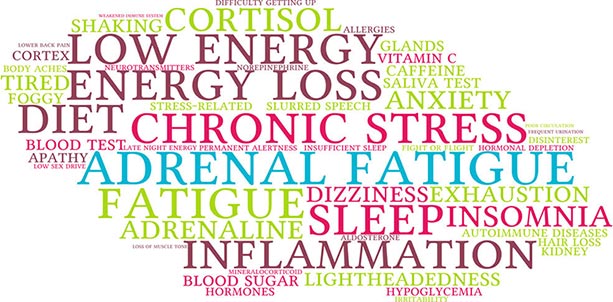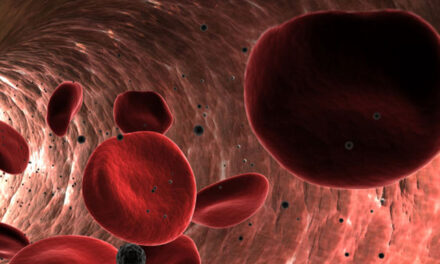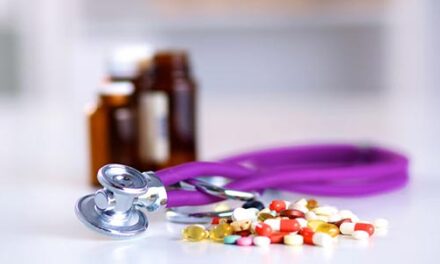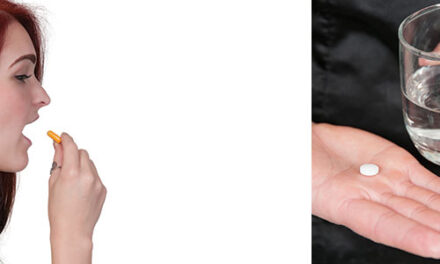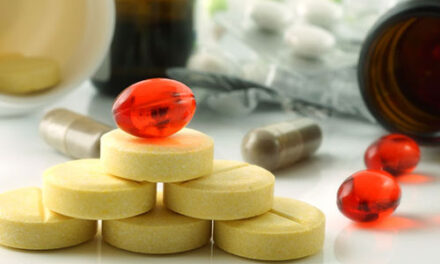Dehydroepiandrosterone (DHEA) is an important hormone produced in the adrenal glands and liver1, and in men, the testes. DHEA and its sulfate ester, dehydroepiandrosterone sulfate (DHEA-S), are interconvertible. DHEA-S is the storage form of DHEA.2,3 DHEA can then be metabolized to androstenedione, the major human precursor to androgens and estrogens4,5—although DHEA doesn’t have direct estrogenic or androgenic activity.6 In most individuals, the production of DHEA normally peaks during the mid-’20s and then begins a steady, progressive decrease of up to 90 percent with aging.7 This decrease is associated with a host of age-related syndromes and conditions, including a concurrent reduction in protein formation, a decrease in muscle mass, and an increase in body fat.8 There are no good dietary sources of DHEA other than by way of supplementation.
7-keto DHEA is a metabolite of DHEA and may prove to be a safer alternative. Unlike DHEA, 7-keto-DHEA is not converted to androgens and estrogens.9,10,11 Oral or topical administration of 7-keto-DHEA does not affect plasma levels of steroid hormones.12,13 Similarly to DHEA, 7-keto-DHEA is rapidly converted to the sulfated form, known as 7-keto-DHEAS14.
Areas Of Benefit
Clinical studies have been conducted on supplementation with both DHEA and 7-keto-DHEA. Based upon that research, DHEA offers potential benefits for adrenal support, youthful skin, sexual support, bone mineral density, mood support/ mental function, healthy inflammatory response in body tissues, fatigue reduction, menopause, weight loss, and insulin sensitivity. Clinical studies on 7-keto DHEA have identified three major areas of potential benefit, including weight loss, cognitive function, and immune function. Following is an overview of the research on each of these dietary supplement ingredients.
DHEA: Adrenal Support
In individuals with suboptimal adrenal function, daily supplementation with 20–50 mg DHEA seems to improve feelings of well-being, skin and hair, and sexuality responsiveness.15,16 DHEA also helps support healthy maturation of the adrenal glands in children with sub-optimal adrenal function.17
DHEA: Youthful Skin
As previously discussed. DHEA levels decline with age. In research with individuals 60–79 years old, taking 50 mg DHEA daily helped reverse certain parameters of aging skin. Subjects experienced an increase in epidermal thickness, sebum production, skin hydration, and decrease facial skin pigmentation.18
DHEA: Sexual Support
Aging males supplemented with 50 mg DHEA daily for six months experienced improvements in parameters of male performance, including erection, orgasmic function, sexual desire, and overall sexual satisfaction. DHEA helped improve male performance in men with sub-optimal blood pressure balance or whose performance was sub-optimal for unknown reasons, but did not improve performance in individuals with diabetes or neurological disorders.19,20
In postmenopausal women, clinical evidence has demonstrated that a single 300 mg dose of DHEA improved sexual response, including significantly greater mental and physical sexual arousal.21 Furthermore, vaginal application of DHEA was found to be effective in reducing vaginal atrophy in elderly postmenopausal women.22
DHEA: Bone Mineral Density
Loss of bone mineral density (BMD) is common with aging. Daily supplementation with 50–100 mg DHEA has been shown to improve BMD in older women and men with sub-optimal BMD.23,24 It also helps improve BMD in younger women with eating disorders.25
DHEA: Mood Support / Mental Function
Experiencing moodiness or “the blues” is common during the lifecycle but can increase with age.26 Some clinical research suggests that taking DHEA orally might improve symptoms of moodiness in elderly subjects.27,28,29 Taking DHEA orally seems to improve healthy mental function in individuals with sub-optimal perception or expression of reality.30
DHEA: Healthy Inflammatory Response In Body Tissues
Some individuals experience acute and chronic inflammation of various tissues of the body resulting from an attack by their body’s own immune system. Taking DHEA orally in conjunction with conventional treatment may help support a healthy inflammatory response in various tissues.31,32,33,34,35,36,37 It may also help promote the normalization of symptoms such as muscle ache.38 In addition, DHEA also seems to improve bone mineral density in such individuals whose conventional medications adversely affect bone mineral density.39,40,41
DHEA: Fatigue Reduction
Some individuals, who experience a period of high physical and/or emotional stress, also experience the onset of fatigue of a chronic nature. DHEA may be able to help. In a clinical study, supplementation with DHEA led to a significant reduction in associated pain, fatigue, limitations in activities of daily living, helplessness, anxiety, difficulty thinking, poor memory, and sexual problems over the period of the study.42
DHEA: Menopause
In a clinical study, 25 mg of DHEA daily increased the levels of all the hormones that derive from DHEA metabolism. It also increased neurosteroids and endorphin levels. The results were an improvement of vasomotor symptoms such as hot flashes, as well as psychological symptoms throughout 12 months of therapy.43
DHEA: Weight Loss & Insulin Sensitivity
In a randomized, double-blind, placebo-controlled study, 56 elderly subjects took 50 mg DHEA daily for six months. Subjects taking the DHEA experienced a significant decrease in abdominal fat, and improvements in insulin sensitivity compared to those using the placebo.44
7-keto: Weight Loss
7-keto-DHEA is thought to be beneficial in weight loss by increasing metabolism and thermogenesis. Early evidence in animals suggests 7-keto-DHEA can increase thermogenesis, possibly by stimulation of thermogenic enzymes in the liver45 ; however this effect has not yet been reported in humans. Clinical evidence suggests 7-keto-DHEA might increase basal metabolism.
In obese patients, 7-keto-DHEA can significantly increase the thyroid hormone triiodothyronine (T3) when used over four weeks.46 This effect on thyroid function may positively influence metabolism47, helping patients reduce body weight and body fat. In fact, one clinical study seems to support the hypothesis that the supplement can enhance weight loss.
Thirty overweight adults were randomized into a prospective, double-blind, placebo controlled eight-week study.48 Fifteen subjects received 100 mg 7-Keto DHEA twice per day whereas the other 15 subjects received a matching placebo. All subjects exercised three times per week, 60 minutes per session of cross-training (aerobic and anaerobic) under the supervision of an exercise physiologist. The exercise plus 7-Keto DHEA group lost a significant amount of body weight as compared with the exercise plus placebo group.
When analyzed per a four-week interval, the 7-Keto DHEA group lost 3.17 lbs per interval, whereas placebo lost 1.09 lbs. In terms of actual body composition changes, the exercise plus 7-Keto DHEA group lost 1.8 percent body fat as compared to 0.57 percent for the placebo group. When viewed as a change in body fat per four-week interval, the 7-Keto DHEA group lost 0.89 percent body fat per interval as compared to 0.29 percent for the placebo.
In a later randomized, double-blind, placebo-controlled, crossover trial49, 7-Keto DHEA was tested in overweight adults maintained on a calorie-restricted diet to determine efficacy in increasing the resting metabolic rate (RMR). The results were that RMR increased significantly by 1.4 percent in the 7-Keto DHEA group, whereas RMR decreased by 3.9 percent in the placebo group. In this study, 7-Keto reversed the decrease in RMR normally associated with dieting and was generally well tolerated with no serious adverse events.
7-Keto: Cognitive Function
Research has indicated that that DHEA administration might be beneficial in terms of neuroprotection against age-related loss of brain functions like learning and memory.50 Furthermore, DHEA showed insignificant effects on both learning/memory ability in aging rats.51 Higher DHEA-S levels are also independently and favorably associated with executive function, concentration, and working memory in humans.52 In addition, other research suggests that 7-keto-DHEA improves chemically-induced and age-related memory impairment.53
7-Keto: Immune Function
7-keto DHEA has also been studied for its potential immune-boosting properties. This includes immunomodulatory effects by stimulating interleukin-2 production by human lymphocytes in-vitro.54 Researchers think that it may also stimulate the activity and effectiveness of T-lymphocytes. These T-lymphocytes may in turn stimulate additional immune system functions.55 Studies based on these observations suggest that 7-keto DHEA may have a future as an important immune system enhancer.56,57 Thus, 7-keto DHEA could prove to be therapeutically useful in a wide range of conditions. Studies suggest that DHEA may reduce the replication of certain types of viruses.58
References
- Lardy H, Partridge B, Kneer N, Wei Y. Ergosteroids: induction of thermogenic enzymes in liver of rats treated with steroids derived from dehydroepiandrosterone. Proc Natl Acad Sci U S A 1995;92:6617–9.
- Moffat SD, Zonderman AB, Harman M, et al. The relationship between longitudinal declines in dehydroepiandrosterone sulfate concentrations and cognitive performance in older men. Arch Int Med 2000;160:2193–8.
- Pepping J. DHEA: dehydroepiandrosterone. Am J Health Syst Pharm 2000;57:2048-50, 2053– 4, 2056.
- Oelkers W. Dehydroepiandosterone for adrenal insufficiency (editorial). N Engl J Med 1999;341:1073– 4.
- van Vollenhoven RF. Dehydroepiandrosterone in systemic lupus erythematosus. Rheum Dis Clin North Am 2000;26:349- 62.
- Tchernof A, Labrie F. Dehydroepiandrosterone, obesity and cardiovascular disease risk: a review of human studies. Eur J Endocrinol 2004;151:1– 14.
- Mortola J, Yen SSC. The Effects of Oral Dehydroepiandrosterone on Endocrine-Metabolic Parameters in Postmenopausal Women. J Clin Endocrin 1990;71(3): 696–704.
- Morales AJ, Nolan JJ, Nelson JC, Yen SS. Effects of replacement dose of dehydroepiandrosterone in men and women of advancing age. J Clin Endocrin 1994;78(6):1360– 7.
- Lardy H, Partridge B, Kneer N, Wei Y. Ergosteroids: induction of thermogenic enzymes in liver of rats treated with steroids derived from dehydroepiandrosterone. Proc Natl Acad Sci U S A 1995;92:6617–9.
- Davidson MH, Weeks C, Lardy H, et al. Clinical Safety and Endocrine Effects of 7-KETO-DHEA. Abstract presented at: Experimental Biology 98, April 19-22, 1998, San Francisco, CA. Abstract obtained from Humanetics Corporation website.
- Colker CM, Torina GC, Swain MA, Kalman DS. Double-Blind Study Evaluating the Effects of Exercise Plus 3-Acetyl-7-oxodehydroepiandrosterone on Body Composition and the Endocrine System in Overweight Adults. Journal of Exercise Physiology Online 1999;2(4):Abstract #30.
- Davidson M, Marwah A, Sawchuk RJ, et al. Safety and pharmacokinetic study with escalating doses of 3-acetyl-7-oxo-dehydroepiandrosterone in healthy male volunteers. Clin Invest Med 2000;23:300–10.
- Sulcova J, Hill M, Masek Z, et al. Effects of transdermal application of 7-oxo-DHEA on the levels of steroid hormones, gonadotropins and lipids in healthy men. Physiol Res 2001;50:9– 18.
- Davidson M, Marwah A, Sawchuk RJ, et al. Safety and pharmacokinetic study with escalating doses of 3-acetyl-7-oxo-dehydroepiandrosterone in healthy male volunteers. Clin Invest Med 2000;23:300–10.
- Arlt W, Callies F, van Vlijmen JC, et al. Dehydroepiandosterone replacement in women with adrenal insufficiency. N Engl J Med 1999;341:1013–20.
- Johannsson G, Burman P, Wiren L, et al. Low dose dehydroepiandrosterone affects behavior in hypopituitary androgen-deficient women: a placebo-controlled trial. J Clin Endocrinol Metab 2002;87:2046– 52.
- Kim SS, Brody KH. Dehydroepiandrosterone replacement in Addison’s disease. Eur J Obstet Gynecol Reprod Biol 2001;97:96– 7.
- Baulieu EE, Thomas G, Legrain S, et al. Dehydroepiandrosterone (DHEA), DHEA sulfate, and aging. Contribution of the DHEAge study to a sociobiomedical issue. Proc Natl Acad Sci U S A 2000;97:4279- 84.
- Reiter WJ, Pycha A, Schatzl G, et al. Dehydroepiandosterone in the treatment of erectile dysfunction: A prospective, double-blind, randomized, placebo-controlled study. Urol 1999;53:590– 5.
- Reiter WJ, Schatzl G, Mark I, et al. Dehydroepiandrosterone in the treatment of erectile dysfunction in patients with different organic etiologies. Urol Res 2001;29:278–81.
- Hackbert L, Heiman JR. Acute dehydroepiandrosterone (DHEA) effects on sexual arousal in postmenopausal women. J Womens Health Gend Based Med 2002;11:155– 62.
- Labrie F, Diamond P, Cusan L, et al. Effect of 12 month dehydroepiandrosterone replacement therapy on bone, vagina, and endometrium in postmenopausal women. J Clin Endocrinol Metab 1997;82:3498–505.
- Sun Y, Mao M, Sun L, et al. Treatment of osteoporosis in men using dehydroepiandrosterone sulfate. Chin Med J (Engl) 2002;115:402–4.
- Villareal DT, Holloszy JO, Kohrt WM. Effects of DHEA replacement on bone mineral density and body composition in elderly women and men. Clin Endocrinol (Oxf) 2000;53:561– 8.
- Gordon CM, Grace E, Emans SJ, et al. Effects of oral dehydroepiandrosterone on bone density in young women with anorexia nervosa: a randomized trial. J Clin Endocrinol Metab 2002;87:4935– 41.
- Hybels CF and Blazer DG. Epidemiology of late-life mental disorders. Clinics in Geriatric Medicine 2003; 19:663– 696.
- Wolkowitz OM, Reus VI, Keebler A, et al. Double-blind treatment of major depression with dehydroepiandosterone. Am J Psychiatry 1999;156:646–9.
- Bloch M, Schmidt PJ, Danaceau MA, et al. Dehydroepiandrosterone treatment of midlife dysthymia. Biol Psychiatry 1999;45:1533–41.
- Wolkowitz OM, Reus VI, Manfredi F, et al. Dehydroepiandrosterone (DHEA) treatment of depression. [Abstract] Biol Psychiatry 1997;41:311–8.
- Strous RD, Maayan R, Lapidus R, et al. Dehydroepiandrosterone augmentation in the management of negative, depressive, and anxiety symptoms in schizophrenia. Arch Gen Psychiatry 2003;60:133– 41.
- van Vollenhoven RF, Morabito LM, Engleman EG, et al. Treatment of systemic lupus erythematosus with dehydroepiandrosterone: 50 patients treated up to 12 months. J Rheumatol 1998;25:285– 9.
- van Vollenhoven RF, Engleman EG, McGurie JL. Dehydroepiandrosterone in Systemic Lupus Erythematosus. Arth Rheum 1995;38:1826– 31.
- van Vollenhoven RF, Engleman EG, McGuire JL. Dehydroepiandrosterone in systemic lupus erythematosus. Arthritis Rheum 1994;37:1305–10.
- an Vollenhoven RF, Park JL, Genovese MC, et al. A double-blind, placebo-controlled, clinical trial of dehydroepiandrosterone in severe lupus erythematosus. Lupus 1999;8:181–7.
- Mease PJ, Merrill JT, Lahita RG, et al. GL701 (prasterone, dehydroepiandrosterone) improves systemic lupus erythematosus. 2000 American College of Rheumatology Meeting. Philadelphia, PA. October 29–November 2. Abstract 1230.
- Petri MA, Mease PJ, Merrill JT, et al. Effects of prasterone on disease activity and symptoms in women with active systemic lupus erythematosus. Arthritis Rheum 2004;50:2858–68.
- Petri MA, Lahita RG, Van Vollenhoven RF, et al. Effects of prasterone on corticosteroid requirements of women with systemic lupus erythematosus: a double-blind, randomized, placebo-controlled trial. Arthritis Rheum 2002;46:1820–9.
- Petri MA, Mease PJ, Merrill JT, et al. Effects of prasterone on disease activity and symptoms in women with active systemic lupus erythematosus. Arthritis Rheum 2004;50:2858–68.
- Mease PJ, Merrill JT, Lahita RG, et al. GL701 (prasterone, dehydroepiandrosterone) improves systemic lupus erythematosus. 2000 American College of Rheumatology Meeting. Philadelphia, PA. October 29-November 2. Abstract 1230.
- Mease PJ, Ginzler EM, Gluck OS, et al. Improvement in bone mineral density in steroid-treated SLE patients during treatment with GL701 (prasterone, dehydroepiandrosterone). 2000 American College of Rheumatology Meeting. Philadelphia, PA. October 29-November 2. abstract 835.
- van Vollenhoven RF, Park JL, Genovese MC, et al. A double-blind, placebo-controlled, clinical trial of dehydroepiandrosterone in severe lupus erythematosus. Lupus 1999;8:181–7. 42. Himmel PB, Seligman TM. A Pilot Study Employing Dehydroepiandrosterone (DHEA) in the Treatment of Chronic Fatigue Syndrome. [Abstract] J Clin Rheumatol 1999:5:56–9.
- Genazzani AD, Stomati M, Bernardi F, et al. Long-term low-dose dehydroepiandrosterone oral supplementation in early and late postmenopausal women modulates endocrine parameters and synthesis of neuroactive steroids. Fertil Steril 2003;80:1495–501.
- Villareal DT, Holloszy JO. Effect of DHEA on abdominal fat and insulin action in elderly women and men. JAMA 2004;292:2243–8.
- Lardy H, Partridge B, Kneer N, Wei Y. Ergosteroids: induction of thermogenic enzymes in liver of rats treated with steroids derived from dehydroepiandrosterone. Proc Natl Acad Sci U S A 1995;92:6617–9.
- Colker CM, Torina GC, Swain MA, Kalman DS. Double-Blind Study Evaluating the Effects of Exercise Plus 3-Acetyl-7-oxodehydroepiandrosterone on Body Composition and the Endocrine System in Overweight Adults. Journal of Exercise Physiology Online 1999;2(4):Abstract #30.
- Lardy H, Partridge B, Kneer N, Wei Y. Ergosteroids: induction of thermogenic enzymes in liver of rats treated with steroids derived from dehydroepiandrosterone. Proc Natl Acad Sci USA 1995;92(14):6617–9.
- Colker CM, Torina GC, Swain MA, Kalman DS. Double-Blind Study Evaluating the Effects of Exercise Plus 3-Acetyl-7-oxodehydroepiandrosterone on Body Composition and the Endocrine System in Overweight Adults. Journal of Exercise Physiology Online 1999;2(4):Abstract #30.
- Zenk JL, Frestedt JL, Kuskowski MA. HUM5007, a novel combination of thermogenic compounds, and 3-acetyl-7-oxodehydroepiandrosterone: each increases the resting metabolic rate of overweight adults. J Nutr Biochem. 2007;18(9):629–34.
- Taha A, Mishra M, Baquer NZ, Sharma D. Na+ K(+)-ATPase activity in response to exogenous dehydroepiandrosterone administration in aging rat brain. Indian J Exp Biol. 2008;46(12):852–4.
- Chen C, Lang S, Zuo P, Yang N, Wang X. Treatment with dehydroepiandrosterone increases peripheral benzodiazepine receptors of mitochondria from cerebral cortex in D-galactose-induced aged rats. Basic Clin Pharmacol Toxicol 2008;103(6):493–501.
- Davis SR, Shah SM, McKenzie DP, Kulkarni J, Davison SL, Bell RJ. Dehydroepiandrosterone sulfate levels are associated with more favorable cognitive function in women. J Clin Endocrinol Metab 2008;93(3):801–8.
- Shi J, Schulze S, Lardy HA. The effect of 7-oxo-DHEA acetate on memory in young and old C57BL/6 mice. Steroids 2000;65:124–9.
- Nelson R, Herron M, Weeks C, Lardy H. Dehydroepiandrosterone and 7-KETO-DHEA augment Interleukin 2 (IL2) Production by Human Lymphocytes In Vitro. Abstract presented at: The 5th Conference on Retroviruses and Opportunistic Infections, February 1–5, 1998, Chicago, IL. Abstract obtained from Humanetics Corporation.
- Whittington R, Faulds D. Interleukin-2. A review of its pharmacological properties and therapeutic use in patients with cancer. Drugs 1993;46(3):446–514.
- Nelson R, Herron M, Weeks C, Lardy H. Dehydroepiandrosterone and 7-keto DHEA Augment Interleukin 2 (IL2) Production by Human Lymphocytes in Vitro. The 5th Conference on Retroviruses and Opportunistic Infections. Chicago, IL. Feb 1998;598:49.
- Hampl R. 7-Hydroxydehydroepiandrosterone–a natural antiglucocorticoid and a candidate for steroid replacement therapy? Physiol Res 2000;49 Suppl 1:S107–12.
- Henderson E, Yang JY, Schwartz A. Dehydroepiandrosterone (DHEA) and synthetic DHEA analogs are modest inhibitors of HIV-1 IIIB replication. AIDS Res Hum Retroviruses 1992;8(5):625–31.

